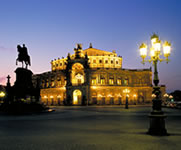
The 700km Swedish Heritage Route examines the cultural history of the Swedes in Mecklenburg-Western Pomerania and Brandenburg. It connects locations where Swedes have left their mark in various ways throughout history. The route was created in 2000 on the initiative of the Swedish embassy with the aim of strengthening contacts between Sweden and Germany's north-eastern states based on their shared history. It stretches from the island of Rügen in the North to Grossbeeren south of Berlin, and from Gadebusch in the west to Peenemünde and Usedom in the east, covering important historical events such as the Thirty Years' War, the rise and fall of the Swedish empire, the ascendancy of Prussia, social changes in the 18th century and the upheaval of the Napoleonic wars. Many reminders from these periods still remain.

When the Swedish king Gustav II Adolf and his troops landed on the island of Usedom in 1630 and then proceeded to occupy the duchies of Pomerania-Szczecin and Pomerania-Wolgast, it marked the beginning of a period now commonly known as "the Swedish Era". The Swedish Era began in 1630 amid the confusion of the Thirty Years' War and ended in 1903 with the return of Wismar after it had been leased to Mecklenburg for 100 years. The many museums along the route illustrate German-Swedish history. The baroque stately home of Griebenow and its parks are representative of the period of Sweden's Pomeranian Empire. A journey along the Swedish Heritage Route exploring German-Swedish history provides an interesting insight into the culture of this region and the chance to enjoy some beautiful scenery along the way. Some towns along the Western Pomeranian coast have preserved Swedish traditions and still celebrate the festival of Lucia in mid-December every year. In Prerow, for example, people gather in the old sailors' church for this festival of light.







